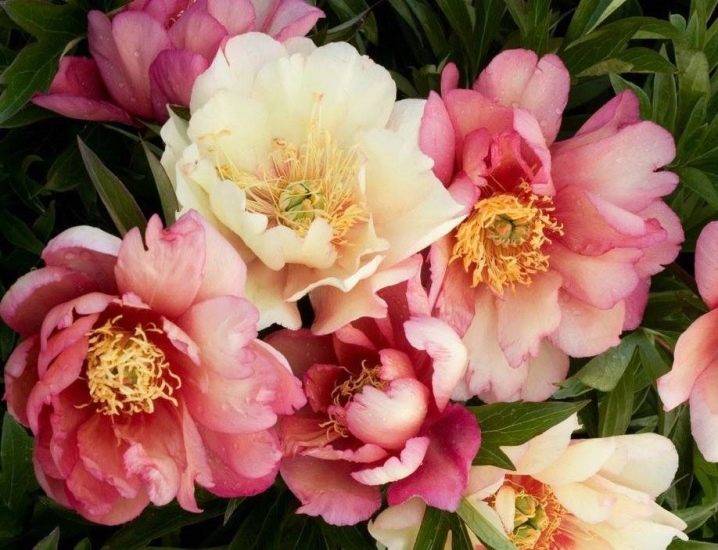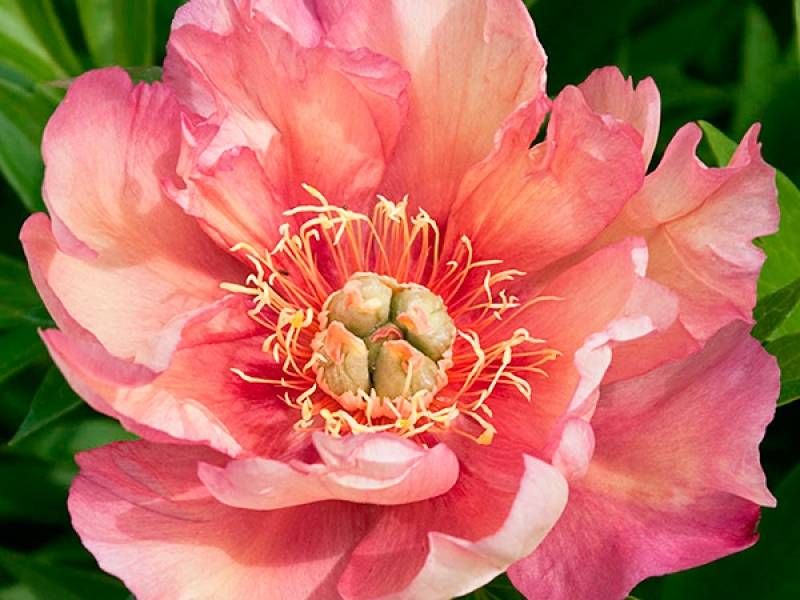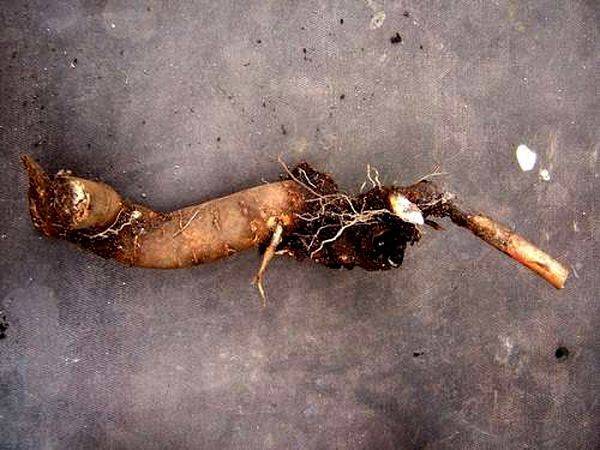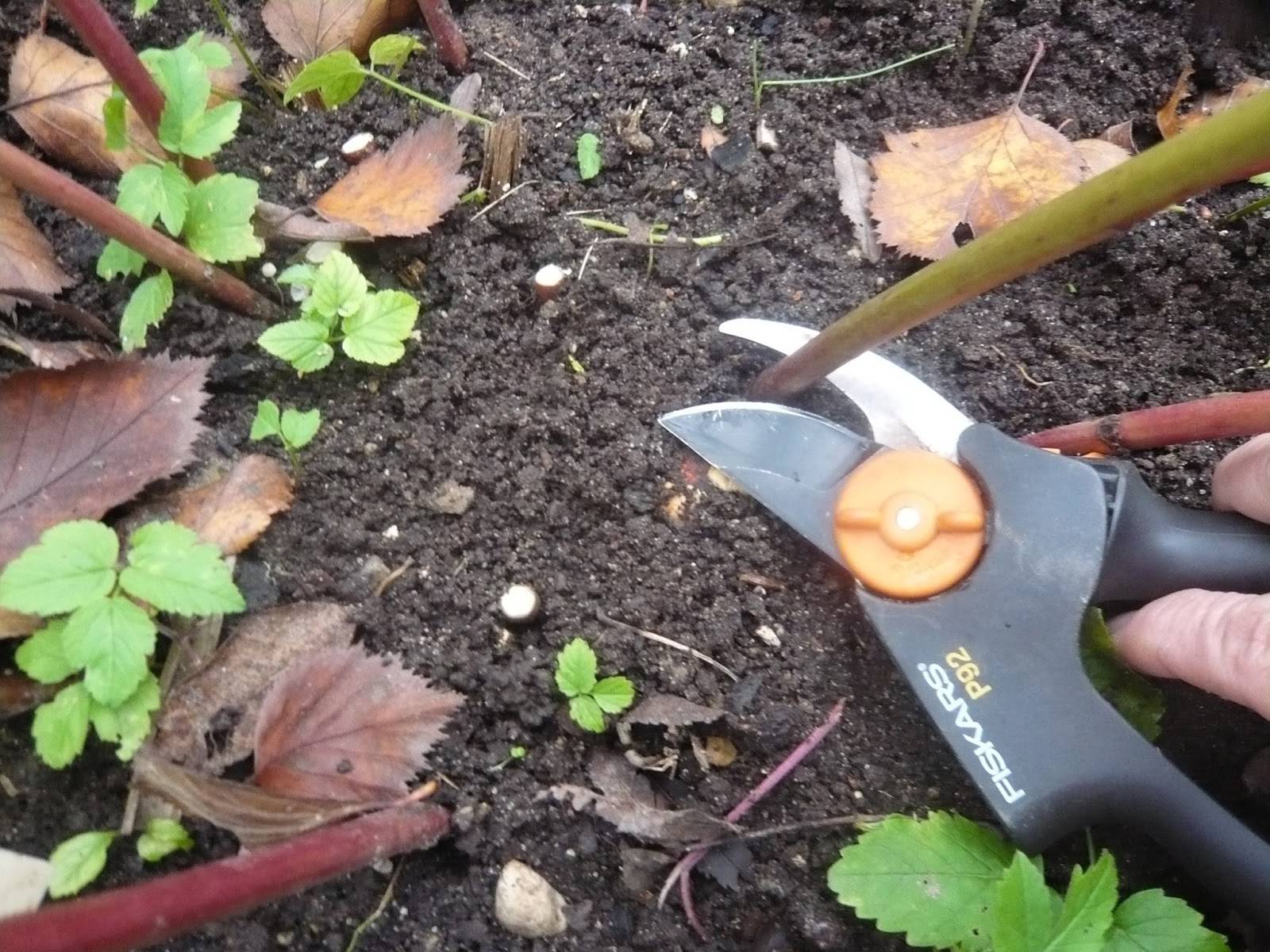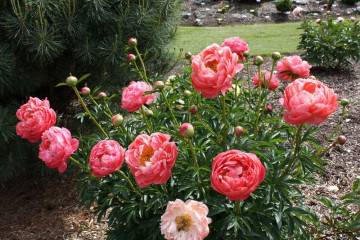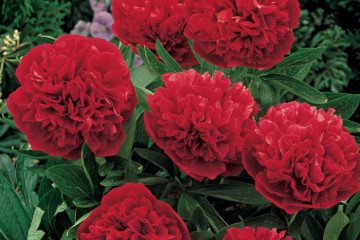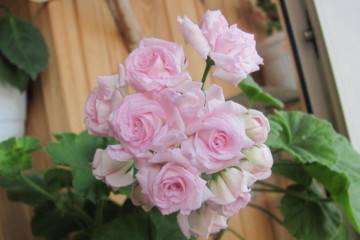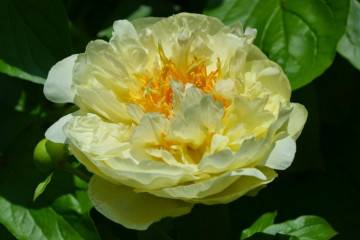Peony Julia Rose (Paeonia Itoh Julia Rose)
Content:
The wave of popularity of peonies is gaining momentum. Florists try to plant as many different varieties as possible on their site. These flowers do not leave anyone indifferent at all. Breeders are constantly working on the creation of new original hybrids. Peony Julia Rose is unusual, more than one grower cannot pass by it.
Peony Julia Rose - what is this variety
Peony Julia Rose belongs to the group of ITO-hybrids. Not everyone knows about these colors. They appeared relatively recently thanks to a Japanese breeder. ITO-hybrid peonies are a combination of herbaceous and tree-like peonies. It is very important that they inherited only the best qualities from their parents.
A little later, the rights to this group of flowers were bought by an American breeder, who was actively engaged in their reproduction and bred several different varieties.
Brief description and characteristics
Botanical description of the plant:
- the stem is strong, durable, erect, can reach 1 m in height;
- the leaves are pinnate, there are a lot of them on the stem, they are large, dark green in color;
- flowering period - late May - early July (a shorter period is possible);
- semi-double flowers, matte petals of pale pink color with a peach tint;
- flower diameter reaches 20 cm;
- flowers have a delicate, delicate, pleasant aroma.
Advantages and disadvantages of the variety
| Advantages of the variety | Disadvantages of the variety |
| high decorativeness | high price |
| immunity to disease | short flowering |
| suitable for cutting | weak aroma |
| tolerate temperature changes well | |
| frost resistance |
Use in landscape design
Since the plant's bushes are quite lush, they will look great as a stand-alone plant that does not need any supplementation. But if you have a certain skill, they can be used in flower arrangements. At the same time, the landscape design of the garden will acquire a brighter and more original look.
Peony Julia Rose will look good in combination with decorative deciduous plants (provided that their leaves are small). More mature and voluminous bushes are located near large garden trees, which also looks very impressive. The tenderness of the flower is ideally emphasized by juniper bushes located nearby.
This flower is in demand among landscape designers throughout the season, since the chic lush green foliage does not lose its decorative effect until the onset of the autumn cold.
Growing a flower
The agrotechnology of a peony of this variety is simple, standard for all types of peonies.
Planting by root cuttings
Root cuttings can be removed from the mature plant at the end of the flowering period. The optimal time is mid-August. This procedure is carried out as follows:
- The rhizome of an adult peony is taken out, excess soil is gently shaken off from it and damaged and rotten roots are removed.
- The rhizome is divided into a maximum number of small parts of 1-3 cm, each of which must have 1 root and 1 root bud.
- Cuttings are soaked for 1 hour in a solution of potassium permanganate or disinfectant.
- Then the parts are rolled in crushed charcoal and left overnight until a small crust forms.
- Cuttings are planted in loose nutrient soil at a distance of 20 cm from each other.
In the future, caring for future plants consists in covering in hot weather, timely watering, weeding and careful shelter for the winter.
Peonies are planted in open ground in spring, autumn or late summer.
Seat selection
ITO-hybrid peonies grow better on fertile loamy soils. The plant will not like peat soils, since such soil will be too acidic for it. The landing site should be free of drafts, protected from gusts of wind. You can not choose very sunny areas, but you can not plant in the shade either.
How to prepare the soil and flower for planting
A month before planting, a planting hole is dug, the soil is well dug, expanded clay or crushed stone, humus, coarse river sand and compost are introduced into it. You can also add mineral complex fertilizers for flowering garden plants. The root system of the seedling should be inspected for damage and dried roots. Too long roots should be shortened. You can briefly hold the bush in the root, epine or other similar means. No additional processing is required before planting.
Planting procedure step by step
Step-by-step planting of peonies Julia Rose:
- A landing pit 60 × 60 × 80 cm is being prepared.
- The holes are filled with a mixture of sand, gravel, compost, humus. Potash fertilizers and ash can be added as additional dressings.
- The pit is filled with prepared soil mixture and left for about a month so that the earth is well compacted.
- After this time, peonies are not planted too deeply in the hole.
- The soil is compacted and thoroughly watered.
Planting with seeds (for breeding)
These peonies are hybrid, and therefore it makes no sense to collect seeds for planting from adult plants. ITO-hybrid peonies do not propagate by seeds, since in this case the daughter plants will not retain the properties of the mother bush. This is what determines the high price for seedlings of such varieties.
Plant care
Peony Julia Rose is quite unpretentious, it is easy to care for it if you follow the basic rules.
Watering and feeding
Watering should be carried out quite often only with warm, settled soft water. Its amount should not be too large, since flowers do not like overflow.
The first feeding with complex mineral fertilizers is carried out in the spring at the very beginning of the growing season. In total, during the season, you should not feed the plant more than 3 times.
Mulching and loosening
After each watering, it is recommended to spud the flower, this will have a beneficial effect on the internal and external state of the plant.Mulching with natural materials is also useful, which will reduce the evaporation of liquid from the soil surface.
Preventive treatment
Despite the fact that peonies have a fairly high immunity, in the spring they can be sprayed with insecticides in order to prevent the appearance of pests. It is also important before winter, after the pruning procedure, to loosen the soil, clean it of dry leaves and burn them.
Blooming peony ITO Julia Rose
The bloom of the peony Ito Julia Rose is a beautiful sight, which is impossible to pass by. These peonies are unusual, spectacular and look bright in any summer cottage.
A period of activity and rest
The period of activity begins at the end of May and ends at the beginning of July, but it all depends on the climatic zone.
Care during and after flowering
Care during the flowering period is the timely pruning of wilted inflorescences.
What to do if it does not bloom
If the plant is not flowering, it may have been planted incorrectly, such as in the shade or with high flowing groundwater. It is also possible that it is not protected from drafts. In this case, a peony should be transplanted.
If it doesn't bloom for the first year after planting, there is nothing to worry about, this is normal.
Peonies after flowering
Once in full bloom, peonies retain their plush lush greenery throughout the season.
Transfer
Transplanting a peony to a new place is performed only as needed. This procedure is combined with the division of the rhizome and is rejuvenating.
Pruning
Julia Rose peonies are pruned in the fall. The stems and leaves are completely removed. The slices are sprinkled with crushed charcoal.
Preparing for winter
Mature bushes are able to overwinter under natural snow cover. Young plants need a mandatory shelter for the winter. It can be spruce paws, hilling with natural material, covering with a special garden cloth. You can combine these methods.
Diseases, pests and ways to control them
Peony, as a rule, is resistant to diseases, but some insects do not bypass it. This is most often:
- aphid;
- shield;
- whitefly;
- ants (especially where there are aphids).
The fight against them is necessary with the help of special preparations.
ITO peony Rose Julia is a worthy decoration of any personal plot. It will look good both as a tapeworm and in the company of other plants. Its advantage is that after flowering it retains its decorative properties until the very cold weather.
